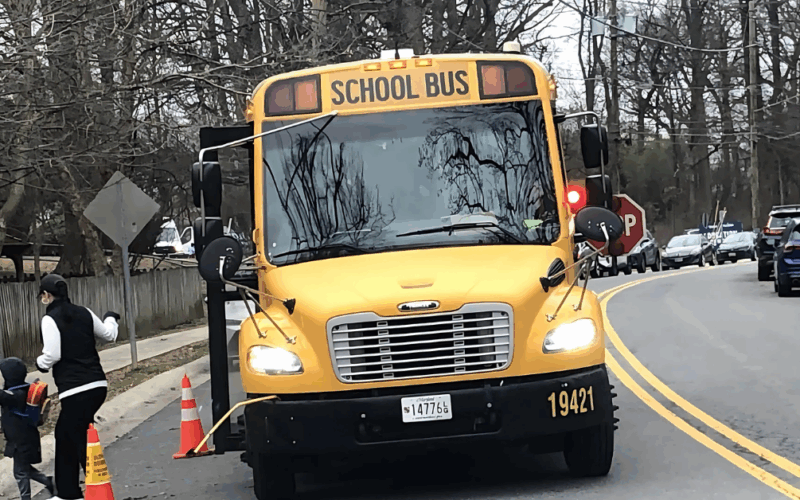As AI cameras begin issuing $250 fines to those illegally passing stopped school buses, lawmakers are doubling down on protecting pedestrians and encouraging safer driving habits. Meanwhile, young drivers, autonomous vehicles, and distracted driving are all under increased scrutiny by local governments determined to reduce accidents and fatalities.
$250 AI Camera Bus Fines: A New Era in School Bus Safety
In Shelton, Connecticut, a groundbreaking initiative involves outfitting all 68 school buses with AI-powered cameras that automatically capture evidence of drivers who illegally pass buses with flashing stop signs. These cameras record images, videos, and license plate details, generating tickets that the offending drivers will receive by mail.
Bus Patrol, the technology provider, explains that the evidence package includes multiple still images and videos tied to the vehicle’s registered owner, making it easier for authorities to enforce compliance. Drivers can view infractions online and have the option to pay the fine or contest it, similar to traditional speeding tickets.
“It’s like they don’t see the big yellow bus and just [have] blatant disrespect for the kids that they could possibly hurt,” said Lisa Matto, a Shelton bus driver with over 20 years of experience.
Mayor Mark Lauretti emphasized that repeat offenders will face harsher penalties, underlining the city’s commitment to student safety. Nearby Bridgeport has already demonstrated success with similar systems, having recorded over 20,000 violations in one school year.
Ohio’s New 50-Hour Supervised Driving Rule Targets Young Drivers
Ohio is overhauling its licensing rules for drivers aged 18 to 20 by requiring them to complete at least 50 hours of supervised driving with an adult before driving unsupervised, effectively treating them the same as teenage drivers. This new law abolishes the earlier fast-track method that often allowed young adults to bypass formal driver education.
The updated requirements include:
- 24 hours of classroom instruction
- 8 hours with a professional instructor
- 50 hours of supervised practice driving
Courses can cost up to $400, raising concerns about affordability and accessibility, especially for working-class families and those in rural areas.
Governor Mike DeWine said, “We know young people who go through driver’s training become safer drivers. So many turning 18 never take training and only pass, sometimes after failing over and over.”
While critics warn this could restrict employment opportunities and lead to illegal driving among teens, supporters argue these measures target safety, reflecting that drivers under 25 remain the most crash-prone demographic.
Texas Enacts Permit Requirement for Fully Autonomous Vehicles
Starting September 1, Texas mandates that all fully self-driving vehicles must obtain a state permit before operating on public roads. Signed into law by Governor Greg Abbott, this regulation empowers the Department of Motor Vehicles to manage permits for companies operating robotaxis and requires protocols to guide first responders in emergencies involving autonomous cars.
This change coincides with Tesla’s recent launch of its robotaxi service in Austin, which currently avoids the permit rule by having human safety monitors in the front seats.
Experts caution, “These new restrictions could complicate operations for Tesla, Waymo, and other companies planning to expand autonomous vehicle services in Texas.”
South Carolina Implements Hands-Free Cellphone Law to Curb Distracted Driving
On September 1, South Carolina enforces a hands-free driving law making it illegal to hold a cellphone while driving. This ban includes:
- Talking on the phone
- Texting
- Scrolling through apps or videos
Enforcement will begin with warnings for the first six months, after which fines come into effect starting at $100 for first-time offenses. Repeat violations will incur $200 fines and two license points.
Department of Public Safety Chief Robert Woods stated, “We recognize that this law will cause a very significant change in driving habits for many drivers. So, we will educate first.”
Governor Henry McMaster called the law “just common sense,” highlighting that distracted driving accounts for over 20,000 collisions annually in the state.
These new traffic laws and innovations reflect a nationwide effort to leverage technology, update outdated rules, and promote safer driving habits across diverse populations.




